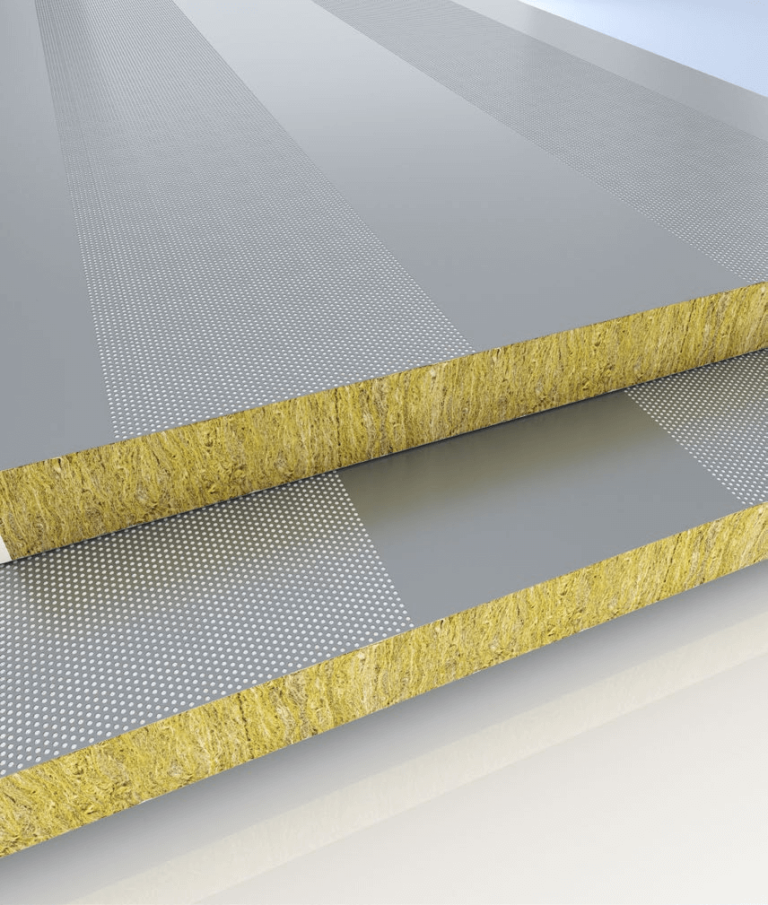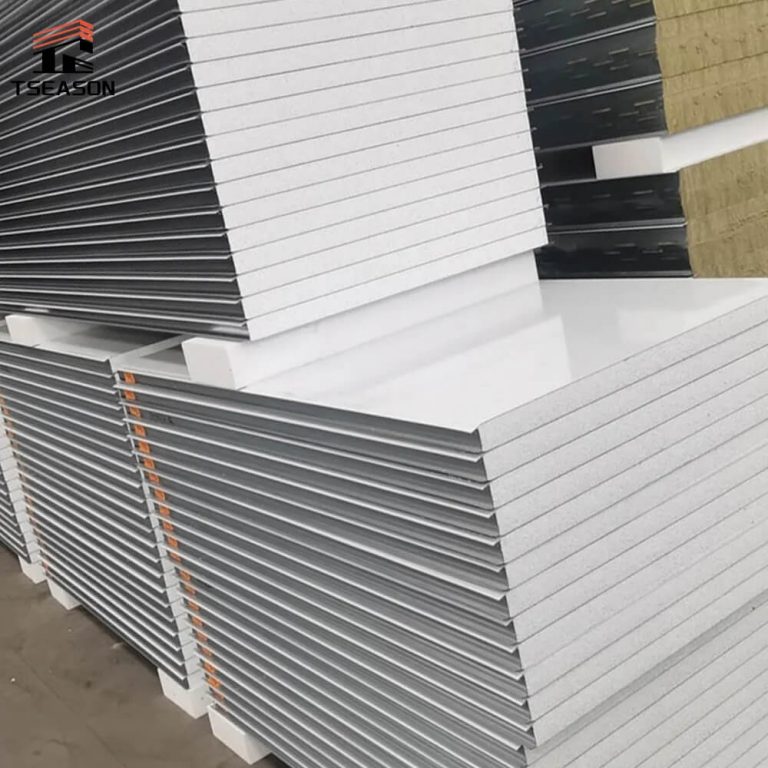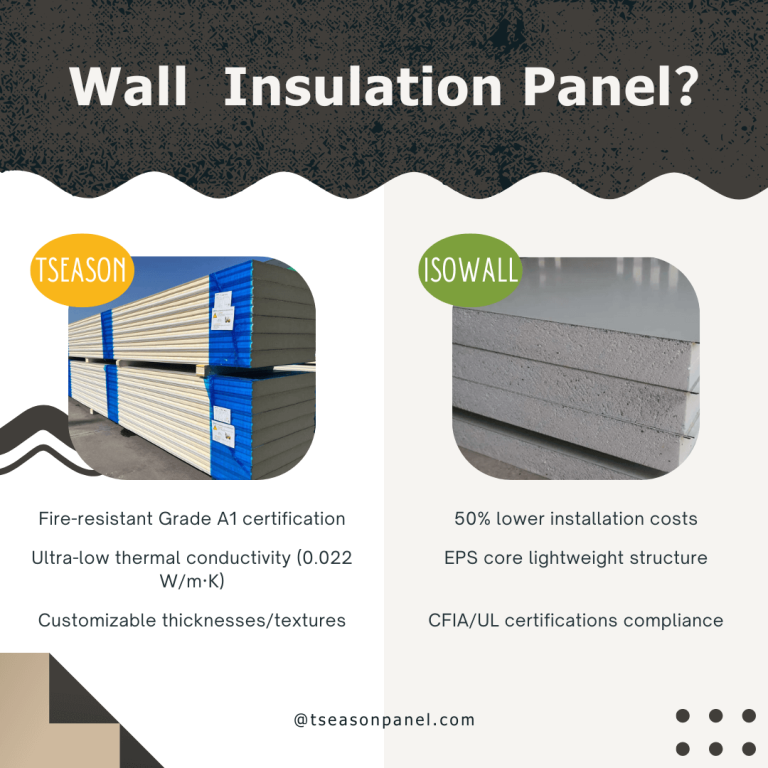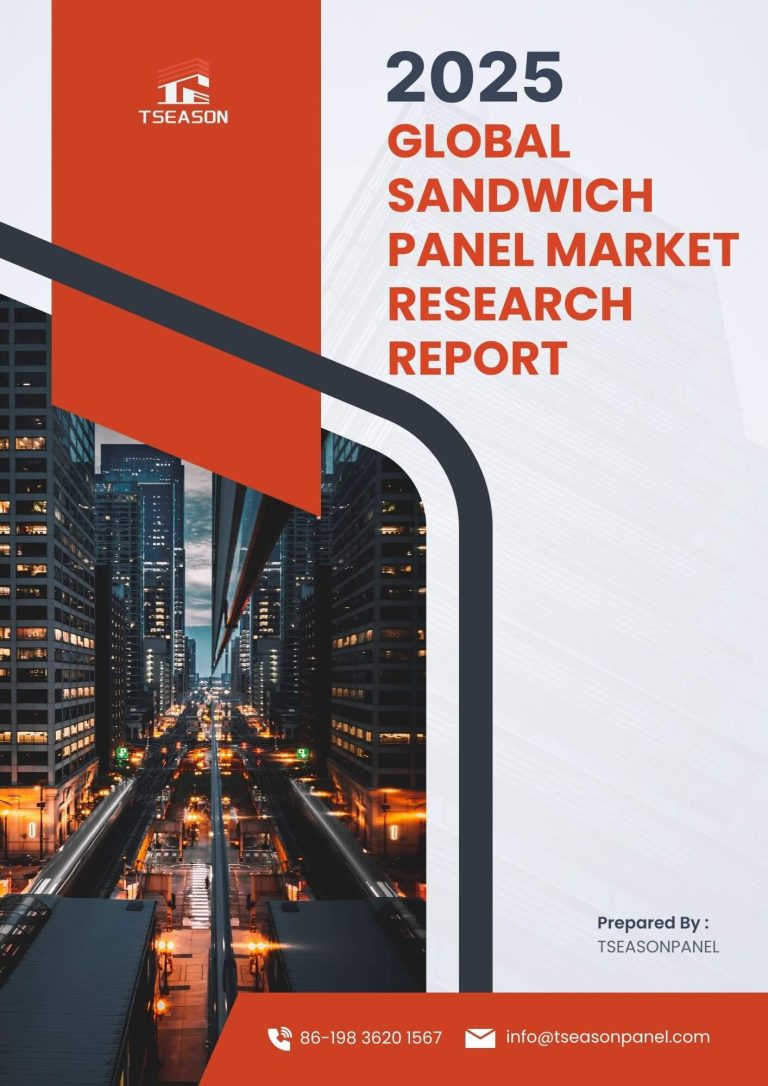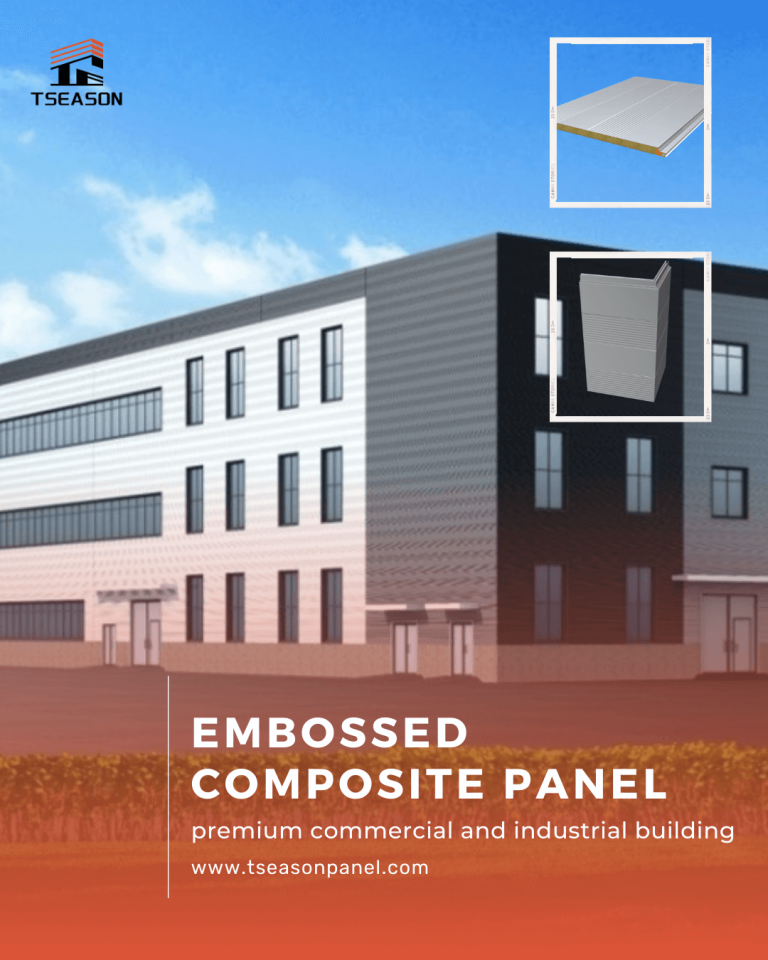PU/PIR Sandwich Panel Prices:Why Some Cost 7USD/M2 and Others $15

In today's competitive market, PU/PIR sandwich panel prices vary significantly—ranging from as low as 7 USD per square meter to 15 USD or more for the same 50mm thickness. What causes such a wide price gap?
As a 30-year manufacturer of sandwich panels and prefab houses, Henan Tseason Panel understands that price differences reflect real product quality and performance variations. Below, we break down several factors determining PU/PIR sandwich panel pricing.
1. Raw Materials: Steel & PU/PIR Core Quality
The steel band and PU/PIR core material play a crucial role in durability and fire resistance. Some manufacturers cut costs by using low-grade materials, while rePU/PIRtable suppliers source from top-tier brands:
Steel: Bluescope Steel, BAOSTEEL (high zinc coating for corrosion resistance)
PU/PIR Foam: HUNTSMAN, WANHUA (consistent density, superior thermal insulation)
Cheaper panels may use thin or low-zinc steel and low-density PU/PIR, leading to poor insulation, faster rusting, and delamination risks.
2. Processing Equipment & Technology
Advanced machinery ensures uniform foaming, strong adhesion, and flawless steel flatness. Many factories use outdated or manual production lines, resulting in inconsistent quality.
At Henan Tseason Panel, we invest in:
Italian PU/PIRMA/OMS continuous production lines (most advanced automation)
Corona treatment technology (removes oil stains, increases bonding strength by 40%)
Without such precision, cheaper panels may suffer from poor foam adhesion, uneven surfaces, and weak structural integrity.
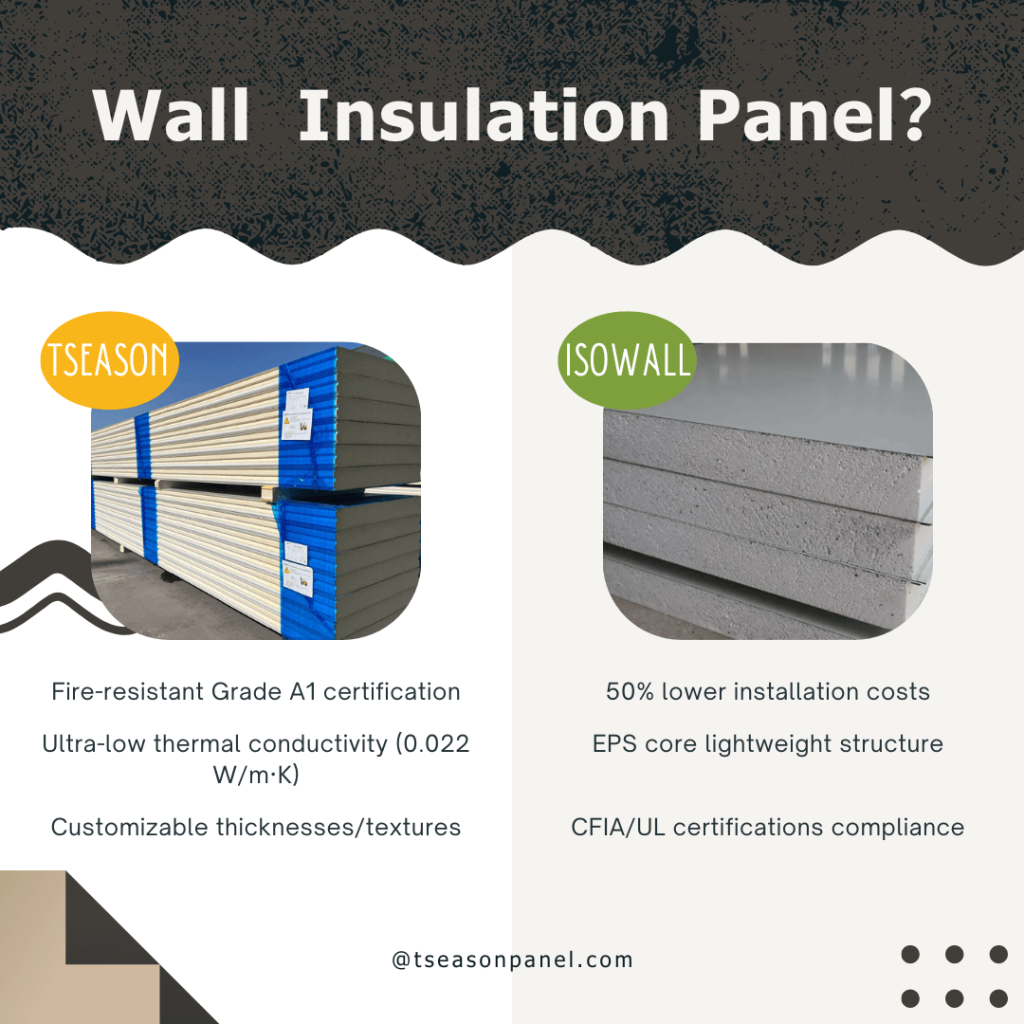
3. Steel & Core Material Specifications
Even at the same thickness (e.g., 50mm), panel performance varies based on:
Steel skin thickness (e.g., 0.4mm vs. 0.6mm)
Galvanized coating (Zinc content: 80g/m² vs. 275g/m²)
PU/PIR foam density (≥40kg/m³ vs. lower-density fillers)
Lower-priced panels often reduce material specs to cut costs, sacrificing longevity and insulation efficiency.
4. Fire Resistance & Certification Standards
Not all PU/PIR sandwich panels offer the same fire safety performance. Panels with higher fire ratings (e.g., B1, B2) use flame-retardant PU/PIR foam and special coatings, increasing production costs.
Low-cost panels may lack proper fire certifications, posing safety risks.
Certified panels (tested by SGS, CE) undergo stricter quality checks, justifying a higher price.
5. Others
Customization (Color, Size, Coating): Standard panels are cheaper, but custom colors (PVDF/HDP coatings), special sizes, or anti-bacterial coatings add 5–20% to the price.
Final Comparison: Why Prices Vary for 50mm PU/PIR Panels
| Factor | Low-Cost Panel ($7/m²) | Premium Panel ($15+/m²) |
| Steel Brand | Local/unknown | Bluescope, BAOSTEEL |
| PU/PIR Core | Low-density, non-certified | Huntsman/WANHUA, high-density |
| Production Tech | Manual/semi-auto | Italian automated lines |
| Fire Rating & Certifications | B2 | B1 |
| Customization | Standard only | Custom sizes/colors |
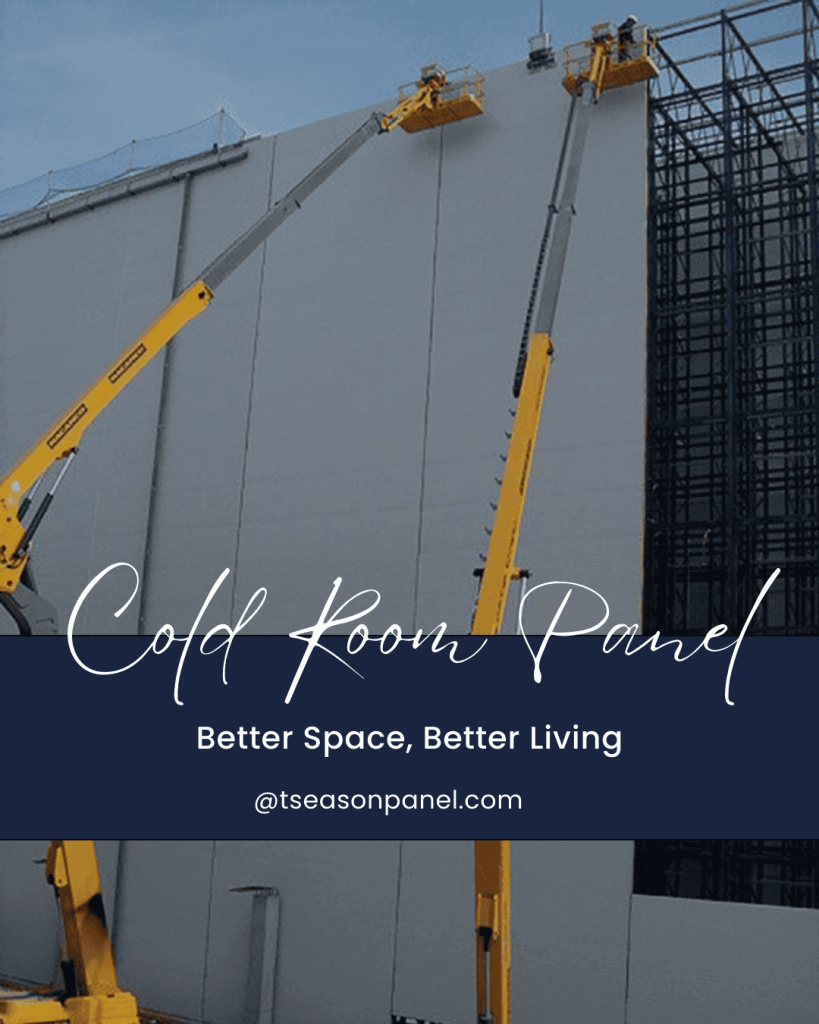
Conclusion: You Get What You Pay For
While $7/m² panels may seem like a bargain, they may often compromise on materials, durability, and structural integrity, which can lead to costly repairs or replacements down the line. Choosing the right PU/PIR sandwich panel supplier is about long-term value, safety, and performance.
Before making a final decision, always verify certifications, inspect production standards, and prioritize quality over short-term savings. Investing in the right solution today ensures a safer, more efficient, and longer-lasting building for years to come.

